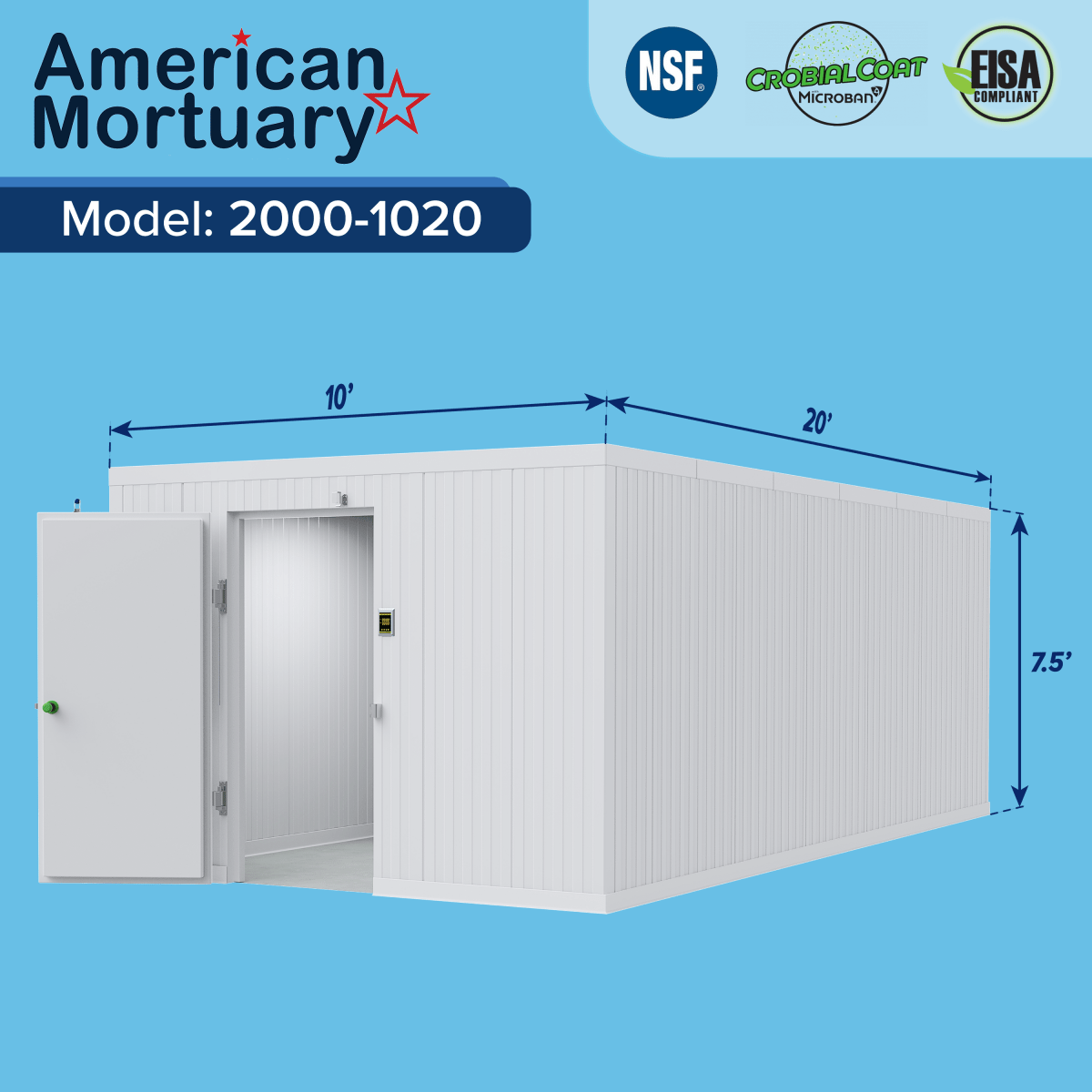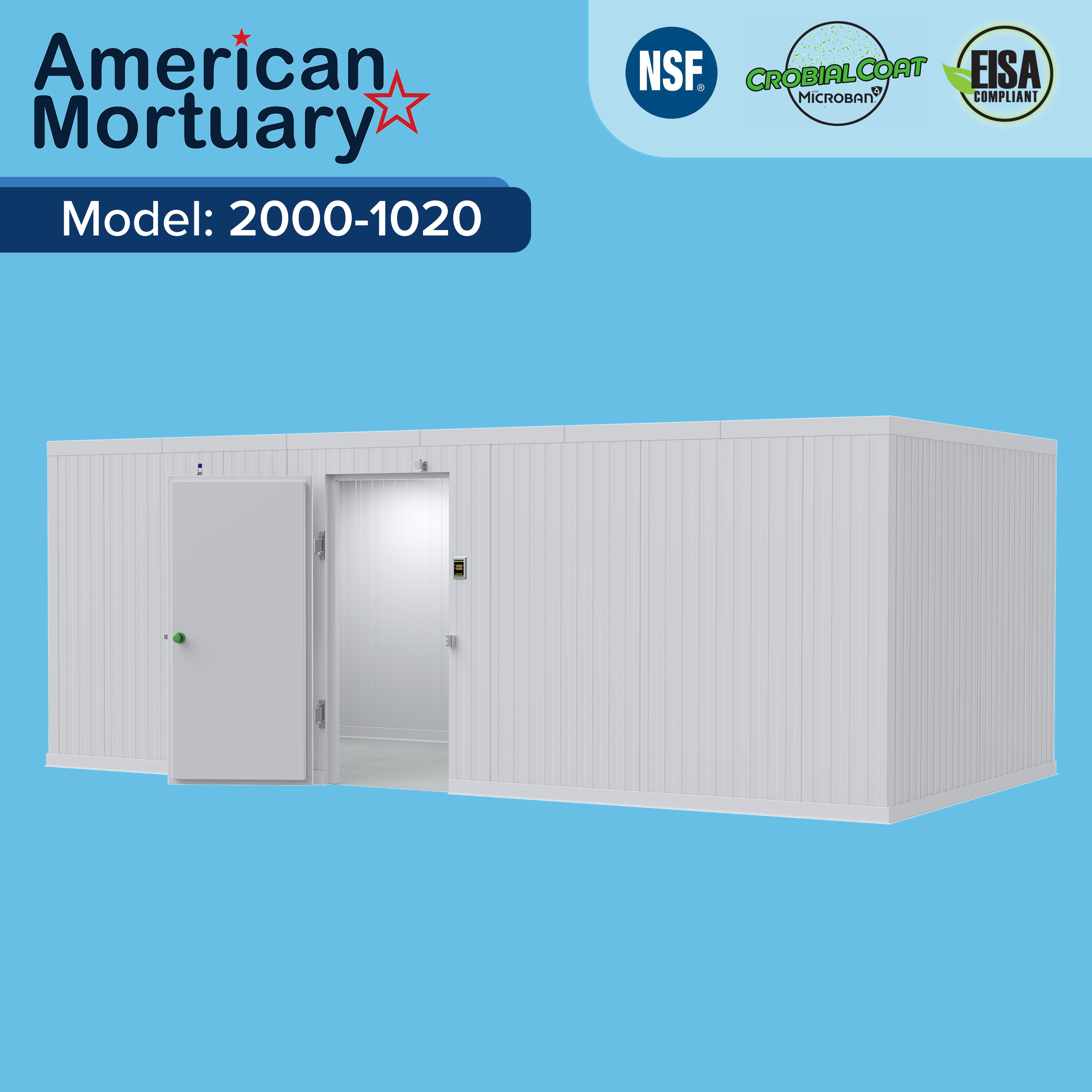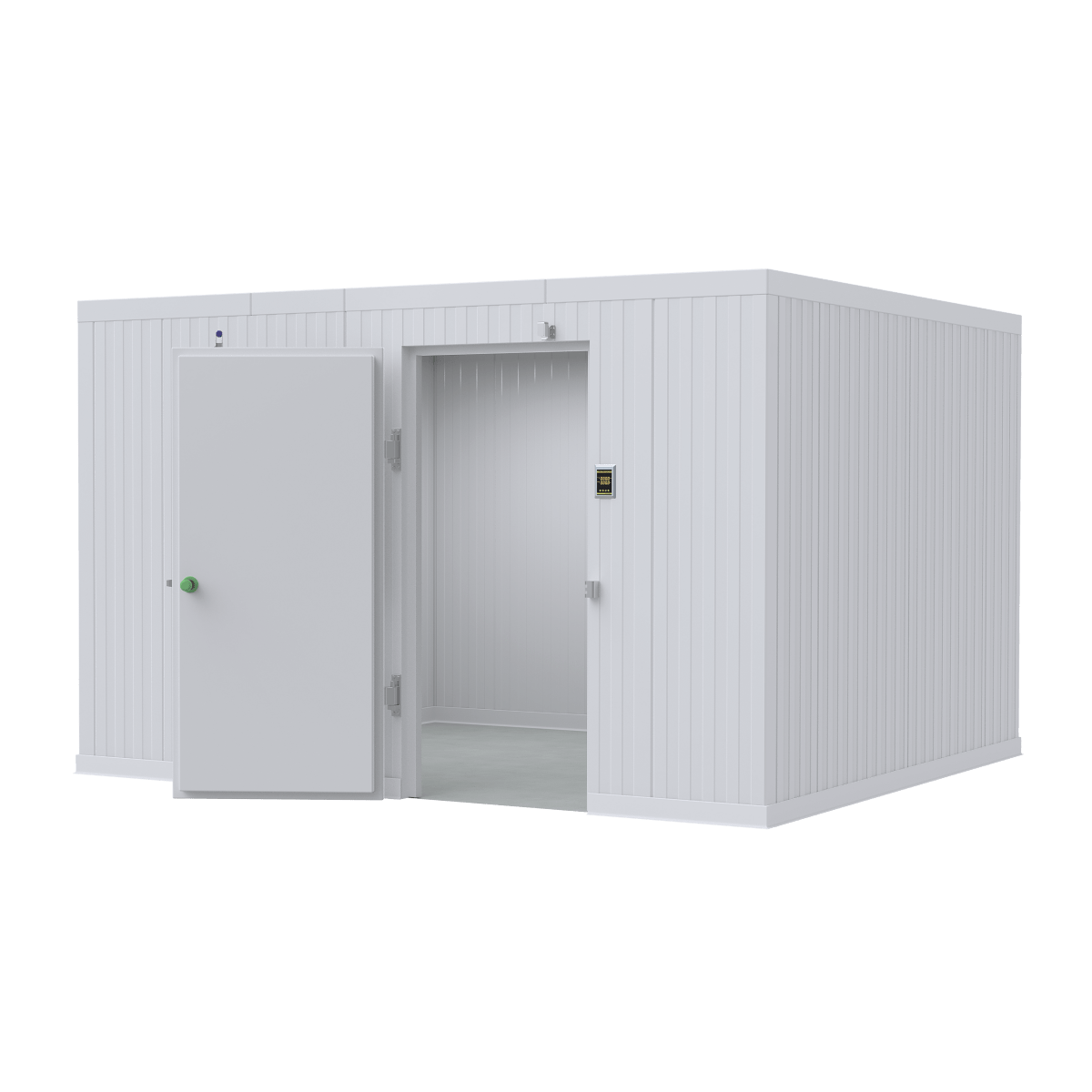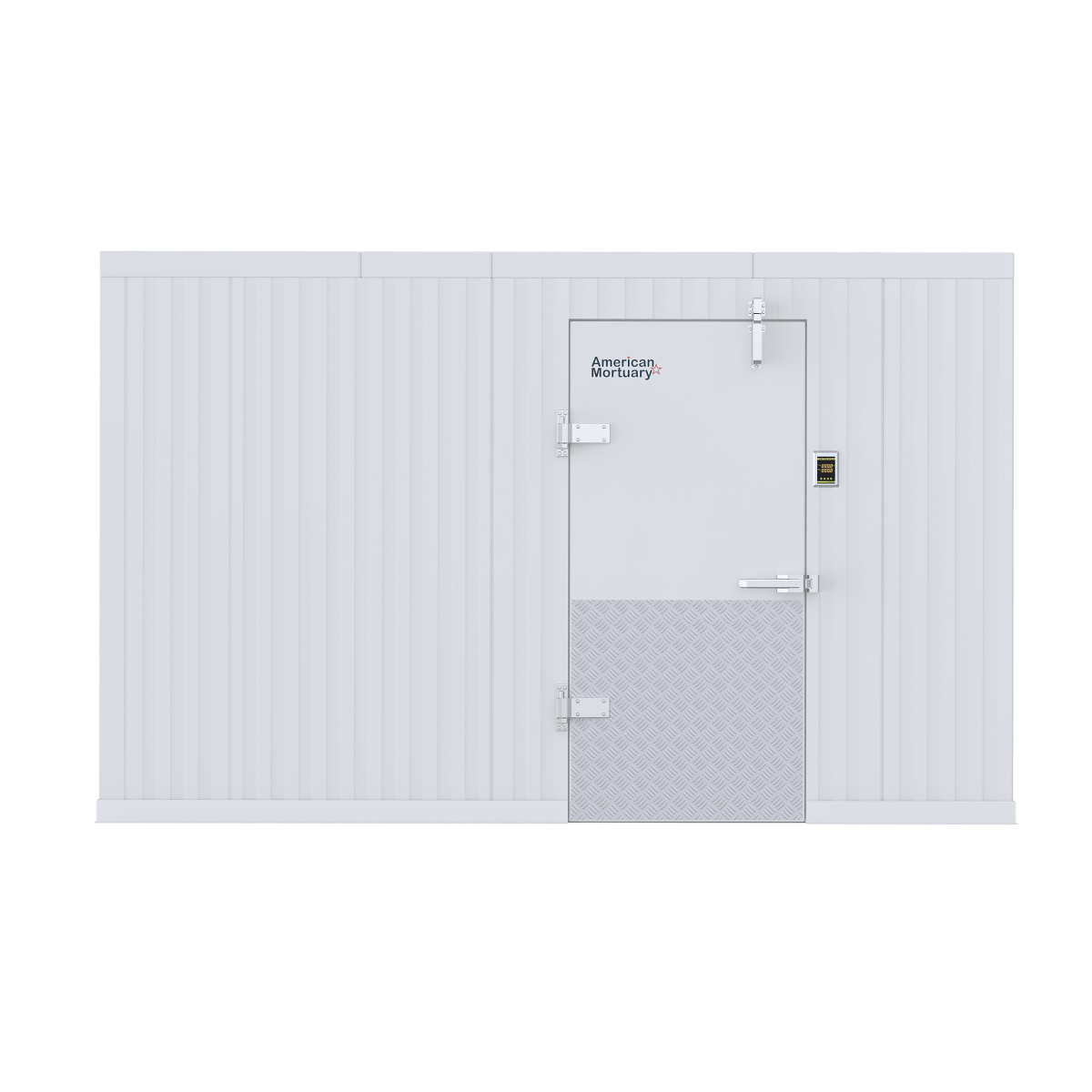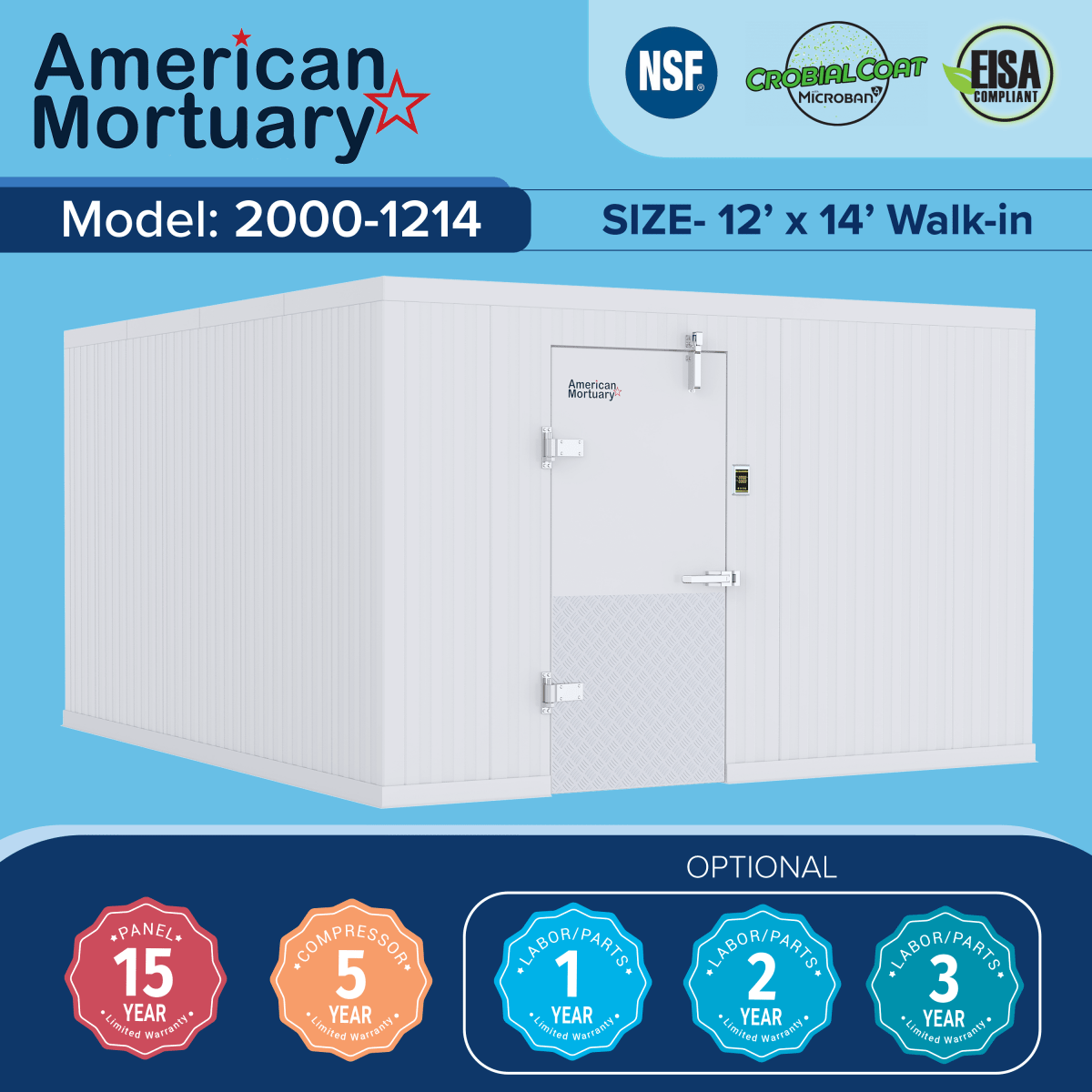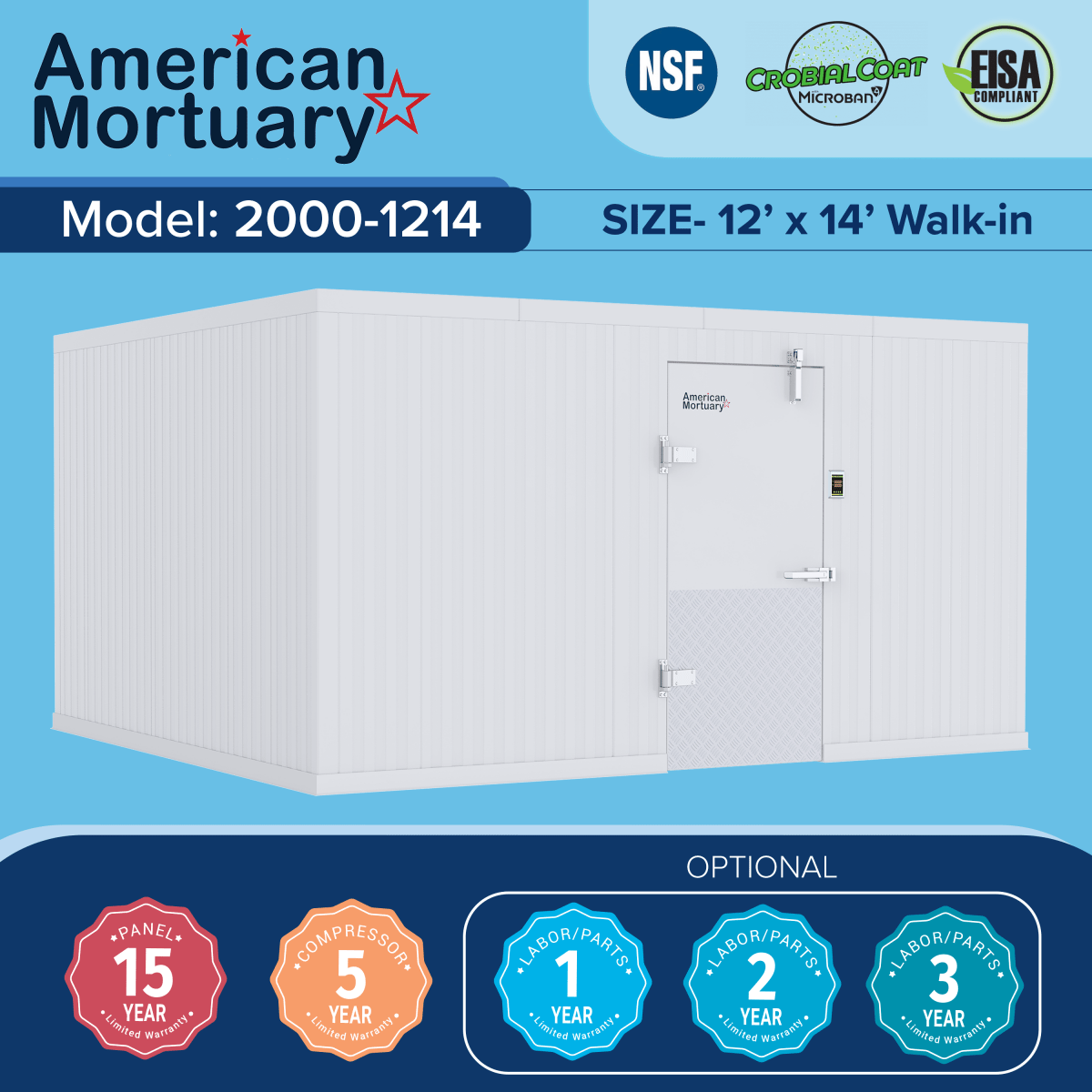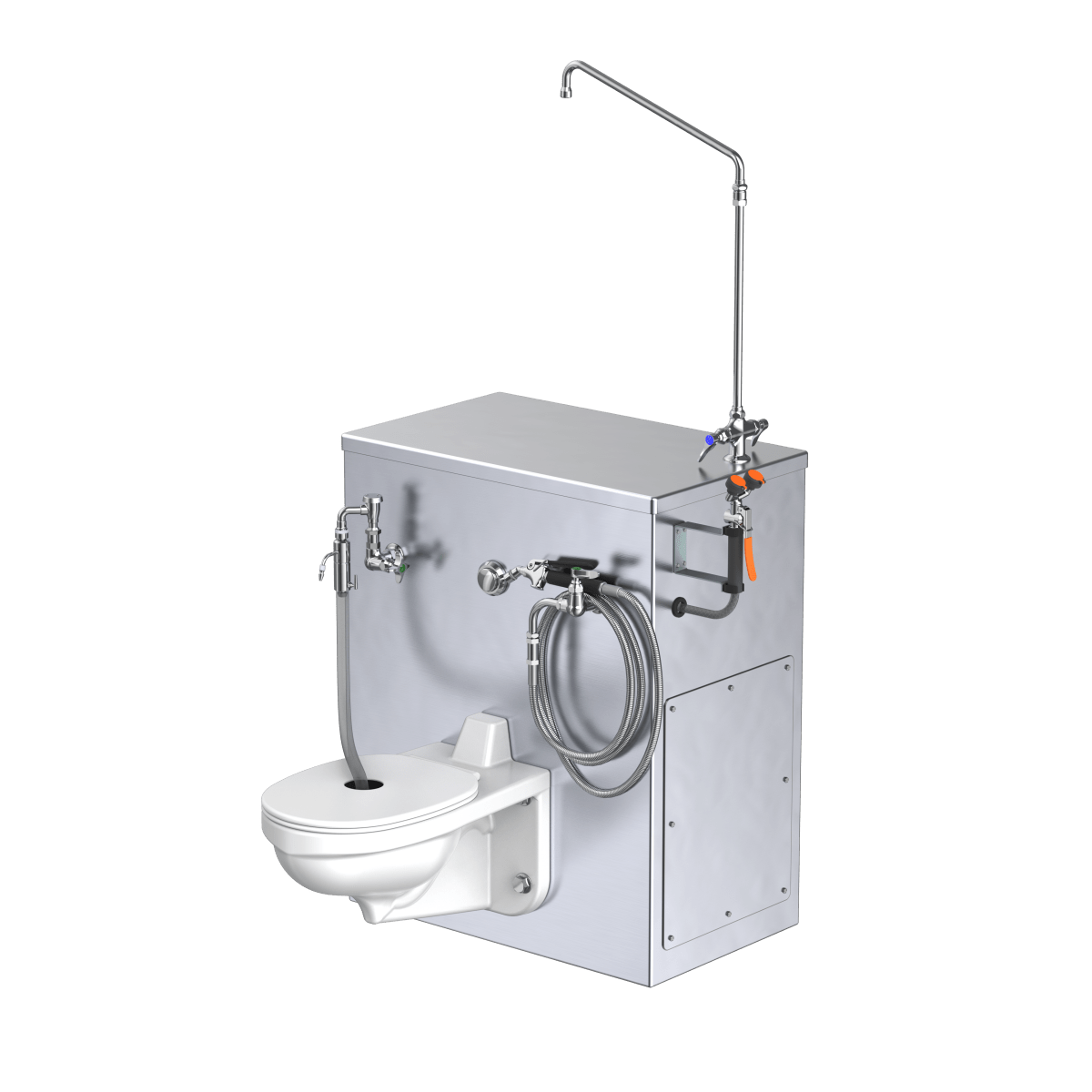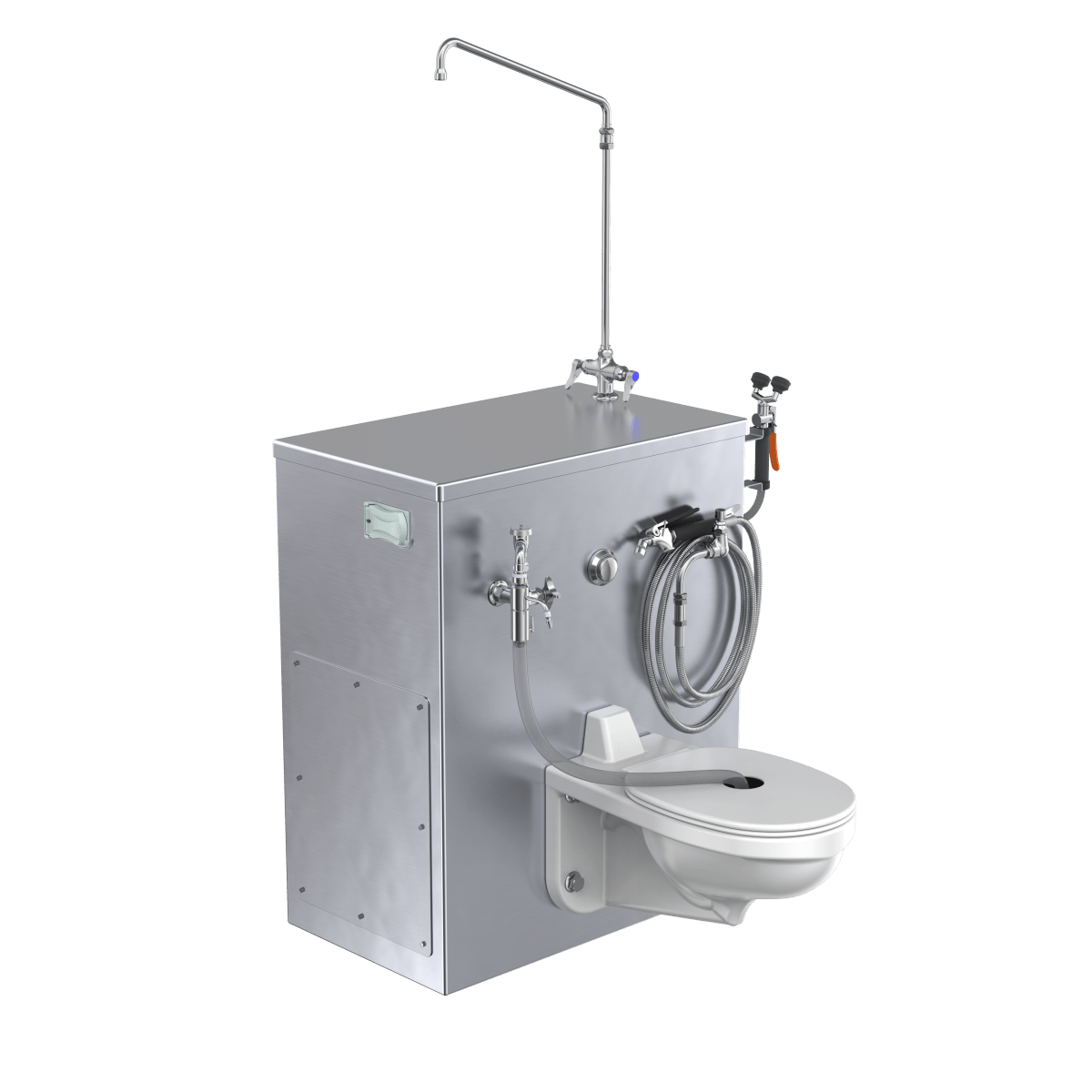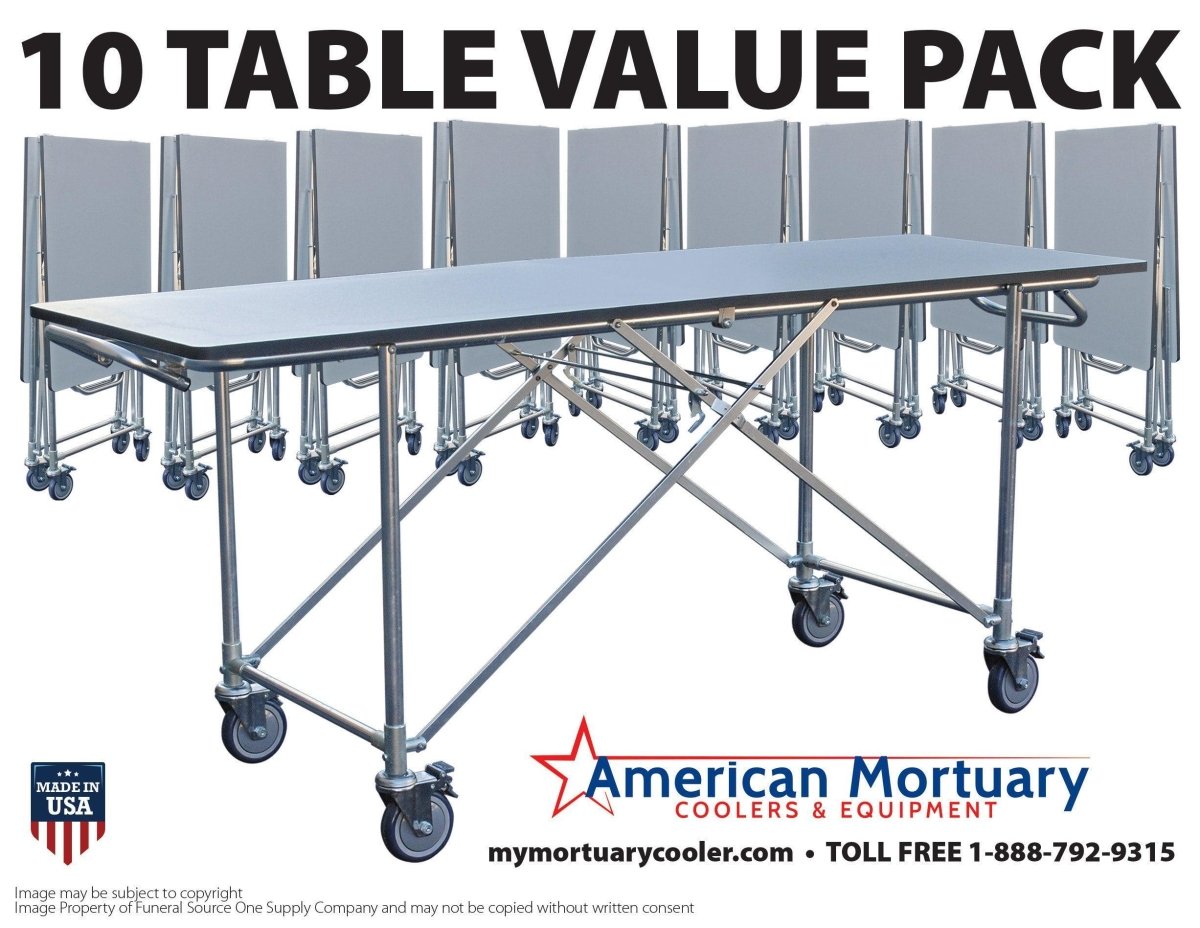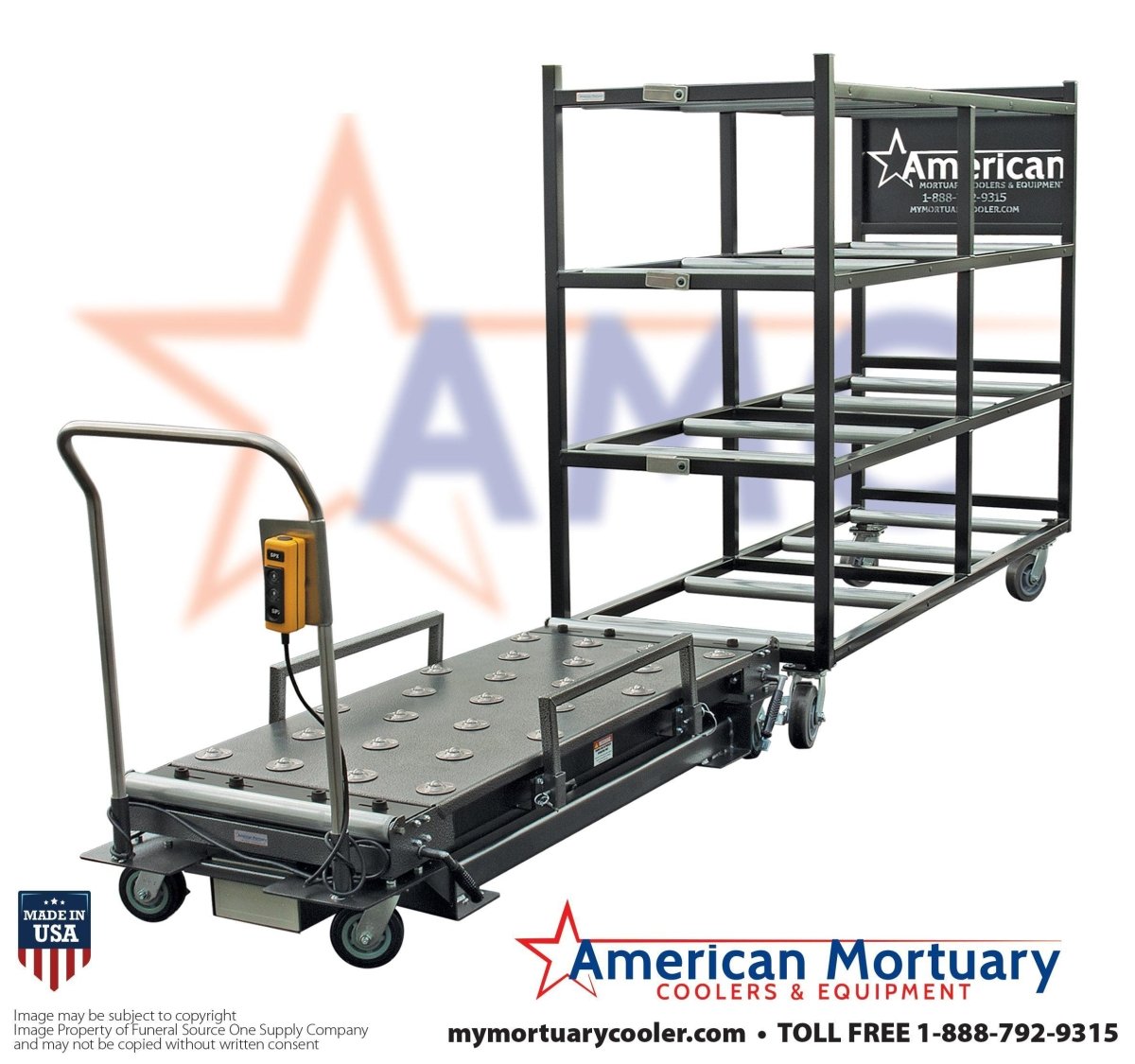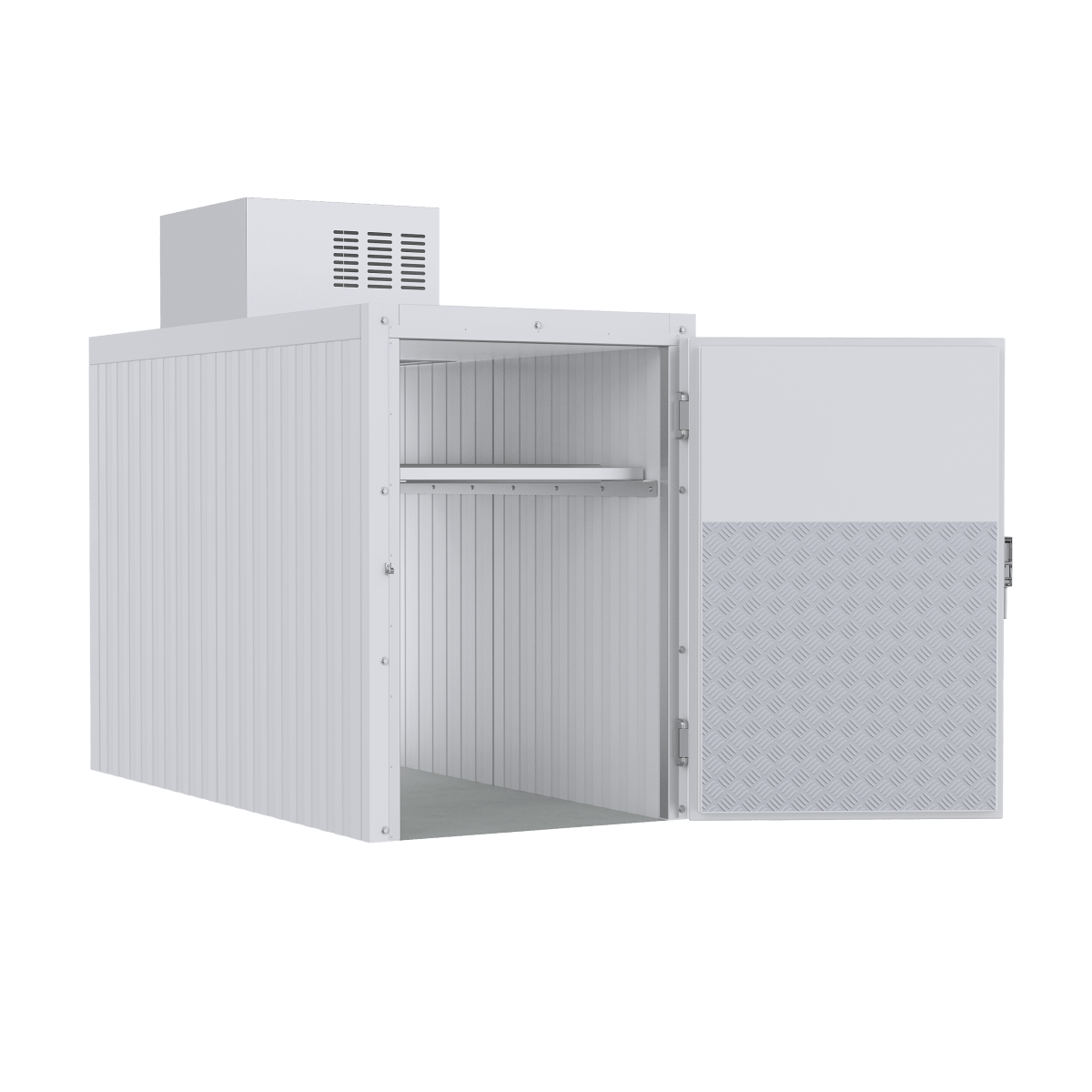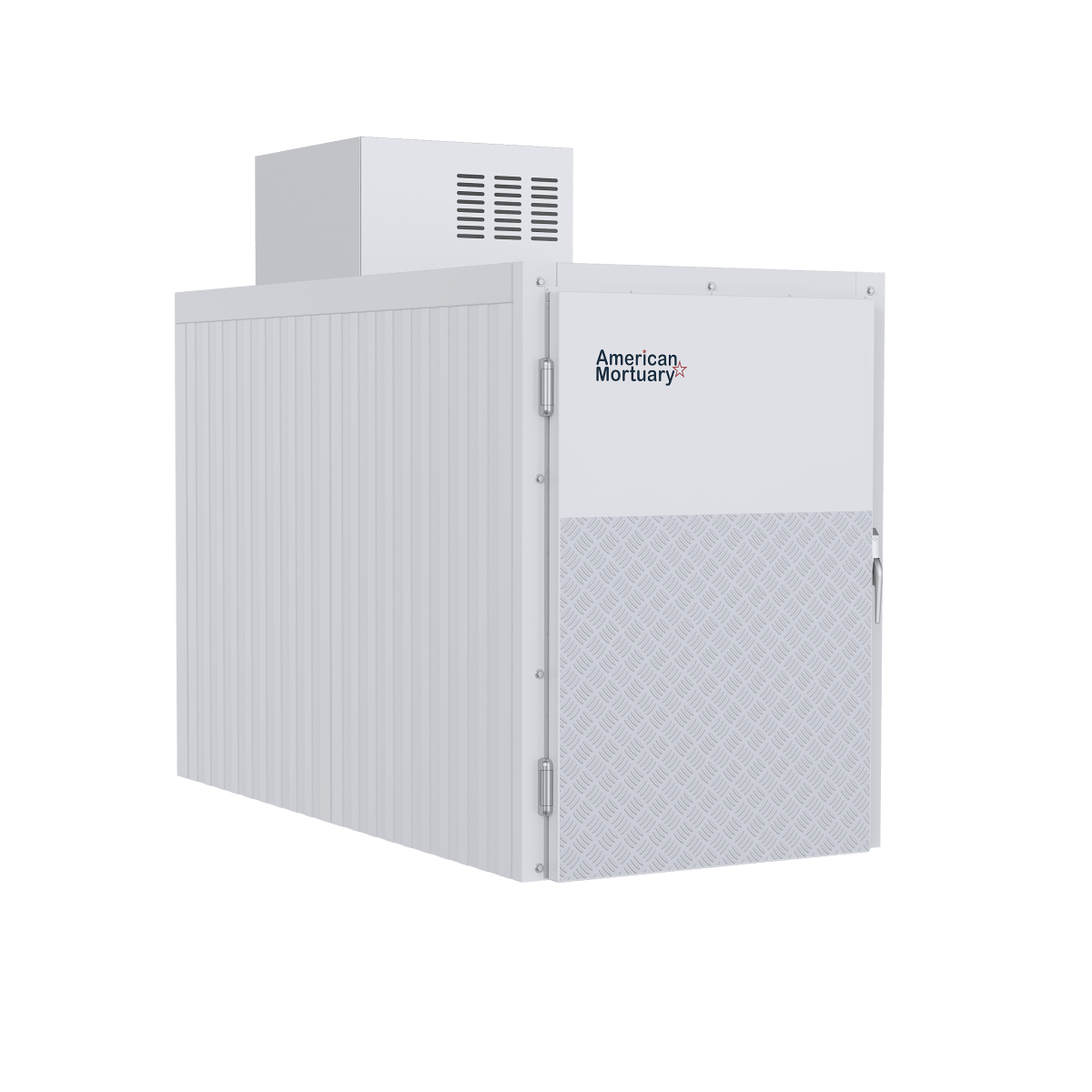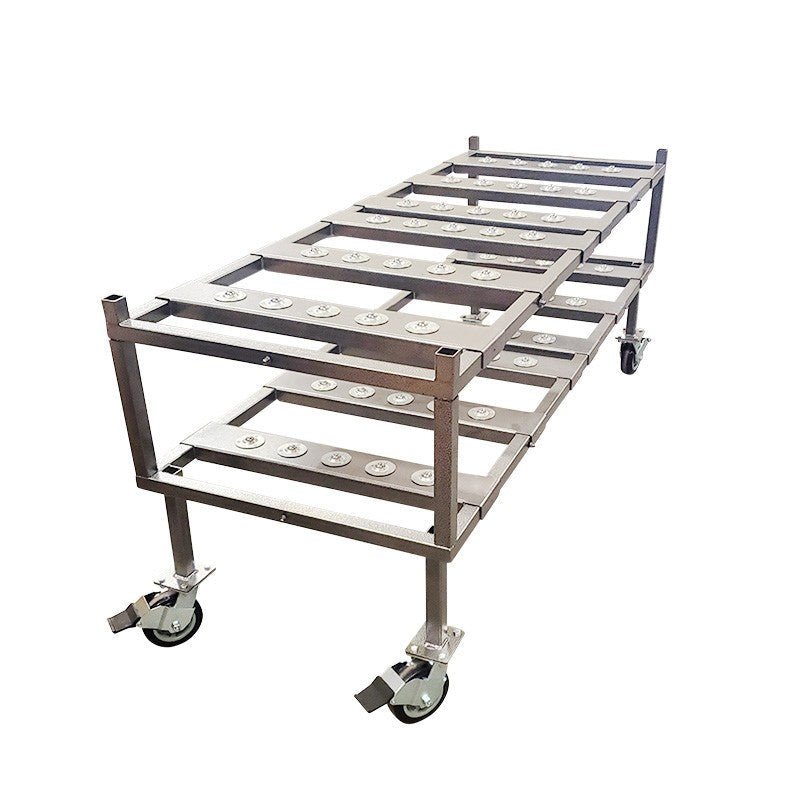Why Cot-Covers Are Essential for Protection and Hygiene
A cot-cover is a protective fabric covering designed to fit over various types of cots, providing hygiene, comfort, and durability benefits across multiple applications. Here's what you need to know:
Primary Benefits:
- Hygiene Protection - Creates a barrier against mold, mildew, and pests
- Easy Maintenance - Wipe-clean surfaces with bleach and water
- Custom Fit - Available in sizes from 22×22" up to 52×30"
- Durability - Materials like vinyl-coated mesh resist wear and tear
- Versatility - Suitable for baby cots, camping cots, pet cots, and medical applications
Whether you're outfitting a daycare center, emergency shelter, funeral home, or camping facility, the right cot-cover protects your investment while ensuring clean, comfortable sleeping surfaces. Research shows cot covers are available in over 20 colors and can be custom-made to fit any cot model or size, with production times as quick as 5 business days.
Different applications require different materials - from breathable cotton for baby cots to heavy-duty vinyl-coated mesh for outdoor use. The key is matching the cover material to your specific needs while ensuring proper fit and safety standards.
Cost ranges from $20 for basic models to $150+ for custom commercial-grade covers. Popular materials include sturdy nylon, premium vinyl-coated mesh, and soft cotton blends, each offering distinct advantages for durability, breathability, and maintenance.
As Mortuary Cooler, a national-level mortuary cooler supplier, I've worked extensively with funeral homes and medical facilities to specify the right cot-cover solutions for professional applications. My experience spans both standard and custom sizing requirements across various industries that demand reliable, hygienic equipment protection.
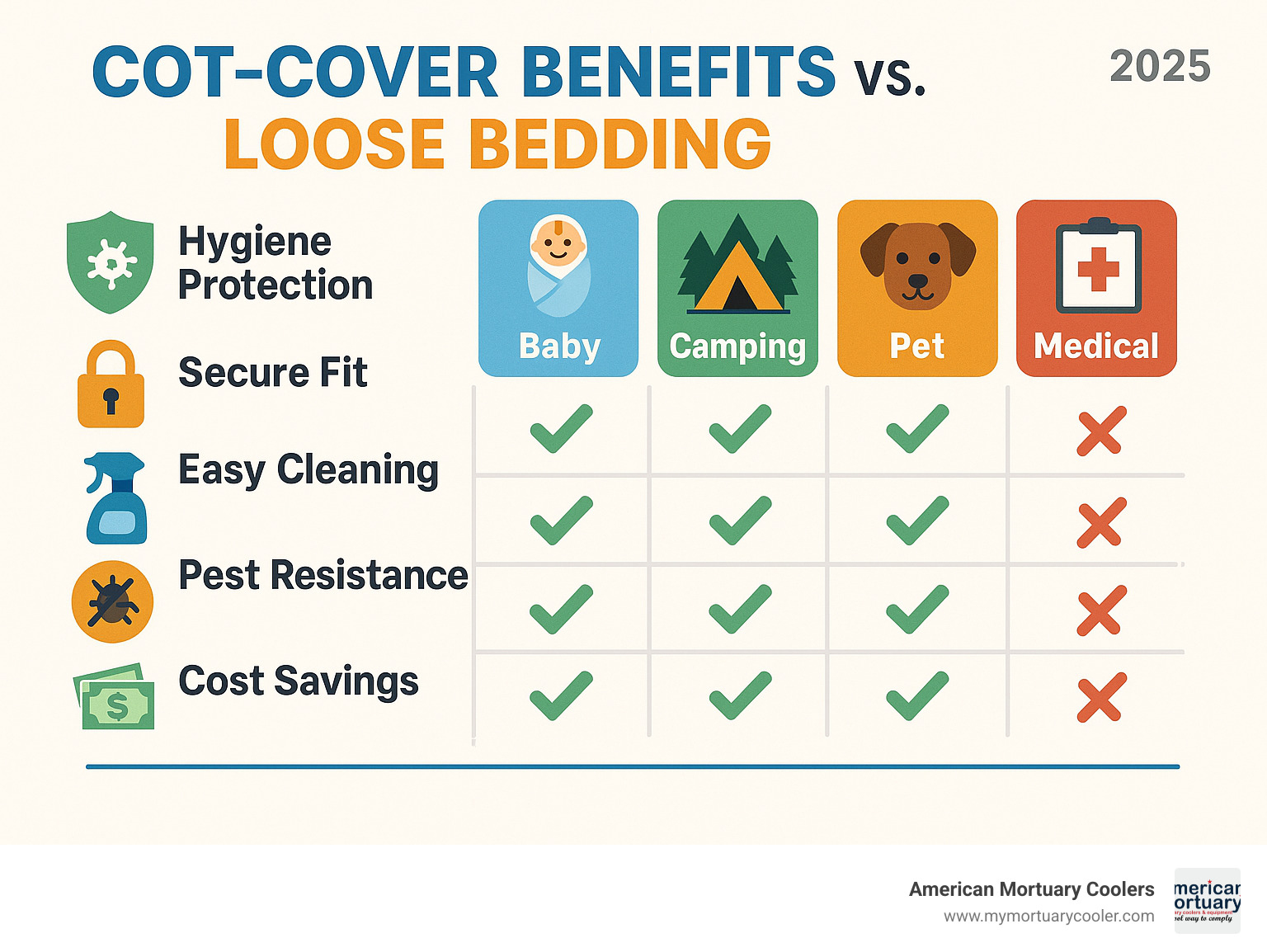
Cot-cover terms to learn:
Cot-Cover Fundamentals: Purpose & Benefits
Picture this: you have quality cots in a daycare, shelter, or clinic. A well-chosen cot-cover is the simplest way to keep those units clean, comfortable, and long-lasting.
A cover creates a protective barrier against bodily fluids, dust, and everyday scuffs—crucial in any setting where equipment is shared. Beyond protection, modern covers add real comfort with thin cushioning or breathable fabrics that regulate temperature.
The newest designs also help with allergen control and work as pest barriers. Lace-up or elastic styles stay put, so no loose sheets bunch up or become trip hazards.
For a deeper dive into picking the best option for your facility, visit our guide on the best cover for cot.
How a Cot-Cover Lifts Hygiene & Durability
Vinyl-coated mesh wipes clean with diluted bleach, while fabrics like treated polyester resist mold and mildew. Because they shed moisture quickly, odors never get a chance to develop.
Key Advantages Over Sheets & Blankets
- Secure fit—no retucking every hour
- 30-second installation saves staff time
- Fewer replacements mean long-term cost savings
In short, a cot-cover upgrades hygiene, comfort, and efficiency in one inexpensive product.
Choosing the Right Cot Cover by Cot Type
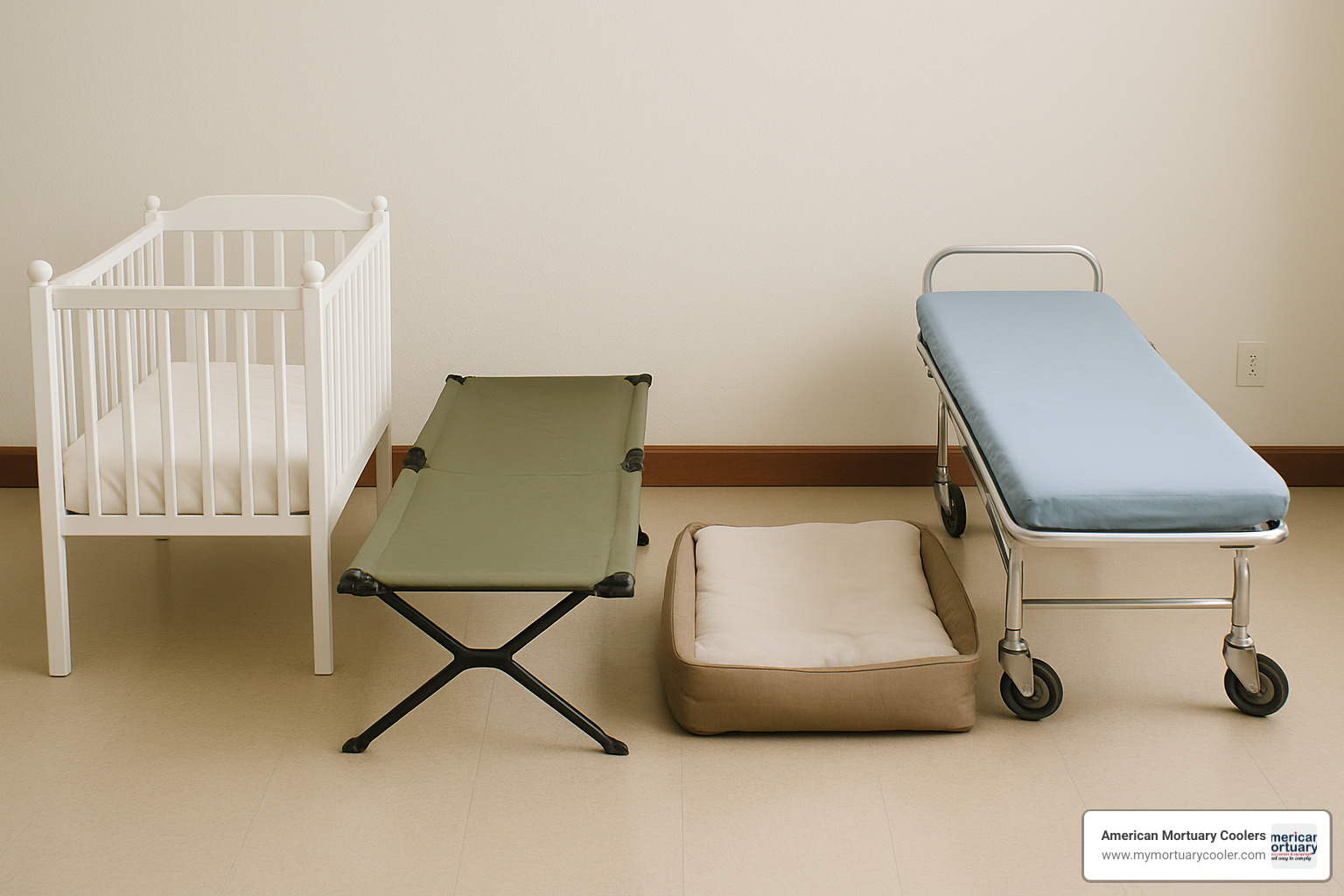
Not every cot faces the same challenges. Before buying, match the cover to the environment and user group.
Baby & Daycare Cot-Cover Essentials
For infants, breathability and non-toxic materials come first. Mesh or soft cotton blends fit snugly to reduce SIDS risks and withstand daily laundering in busy centers.
Outdoor, Camping & Pet Cot-Covers
Vinyl-coated mesh rules the outdoors: UV-stable, quick-dry, and tough enough for repeated set-up/tear-down. Antimicrobial finishes double as flea and pest deterrents—perfect for pets and summer camps.
Medical & Mortuary Applications
Hospitals and funeral homes need bleach-safe, discreet covers that meet infection-control standards. Neutral colors and wipe-clean vinyl help facilities maintain dignity and speed between-use sanitization.
Across all types, the secret is simple: start with the hazards your cot faces, then choose the material that neutralizes them.
Material, Fit & Customization Masterclass
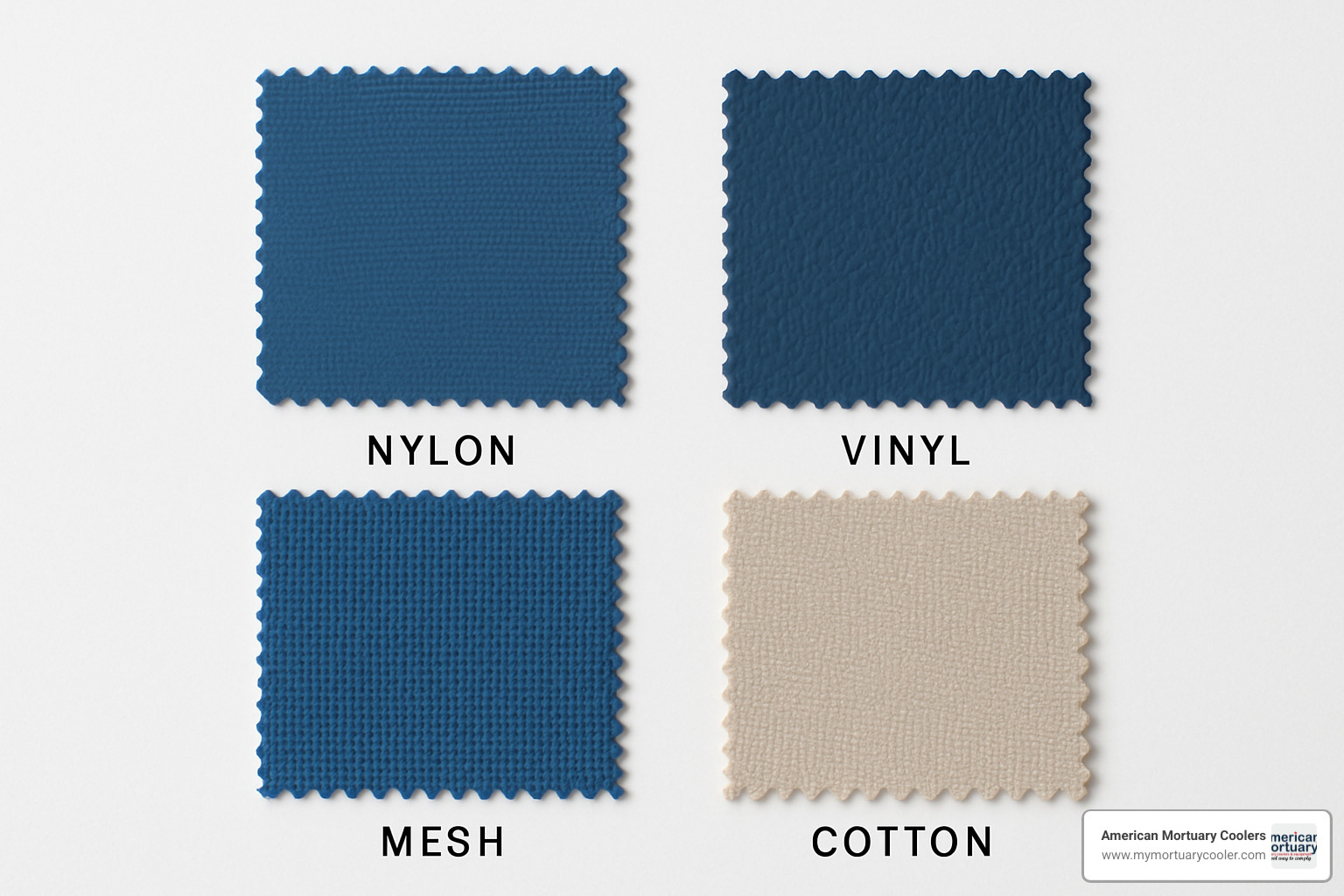
Choosing material is like picking the right tool:
- Nylon – durable, affordable, lightweight
- Vinyl-coated – top-tier stain and fluid resistance
- Mesh – unbeatable airflow in hot climates
- Cotton blends – soft, home-like feel
- Polyester – balanced comfort and longevity
Measuring for a Precision Fit
Measure the sleeping surface, not the frame. Length × width gives size; stacked height matters if cots are stored one atop another. Elastic corners work best when the cover is 1-2 inches shorter than the mattress, while lace-up models add forgiveness for slight size differences.
| Material | Breathability | Water Resistance | Typical Cost |
|---|---|---|---|
| Nylon | Good | Moderate | $25-$60 |
| Vinyl-Mesh | Excellent | Excellent | $45-$120 |
| Cotton Blend | Excellent | Low | $20-$50 |
| Polyester | Good | Good | $30-$75 |
Personalization & Aesthetics
Over 20 colors, patterns, and optional logo embroidery let you match brand identity without sacrificing function.
Safety, Care & Maintenance Best Practices
Safety starts with air-permeable fabrics and compliance with ASTM flammability standards. In healthcare or childcare, choose covers that document passing these tests.
Smart Cleaning Routines
- Daily: wipe or hose off visible soil
- Weekly: machine-wash (fabric) or bleach-wipe (vinyl)
- Storage: ensure covers are fully dry before stacking
Correct Installation
Velcro, grommet, or lace systems must be tensioned evenly. Any loose fabric should be tucked below the sleep surface to prevent mess, especially with infants or less-mobile users.
Buying, DIY or Custom? Your Next Steps
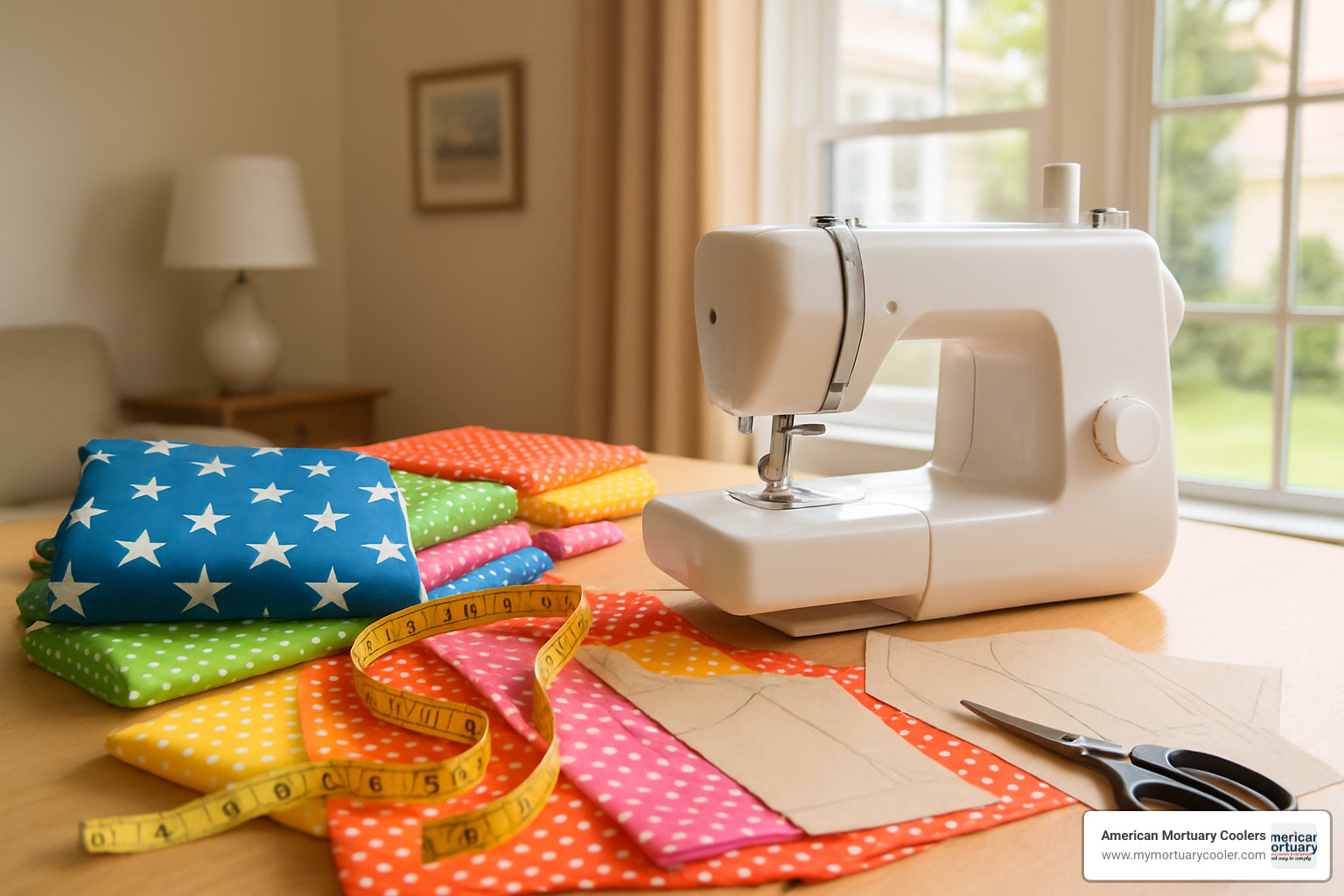
Prices run $20–$150+. Basic cotton fits home use; vinyl-mesh suits institutions. Online stores are quickest for standard sizes, while specialty suppliers (like American Mortuary Coolers) guide material choices and certify compliance.
DIY sewing works for simple needs, but remember: safety certifications can’t be home-sewn.
Regulations & Certifications to Check
- CPSC / CPSIA for children’s products
- ASTM F406 performance standards
- Local hospital infection-control rules
Frequently Asked Questions about Cot-Covers
What size cot-cover do I need? Measure the sleeping surface; covers should fit snugly without excess fabric.
Are vinyl cot-covers safe for babies? Use only air-permeable vinyl that’s third-party tested for infant use; many facilities still prefer breathable cotton or mesh.
Can I machine-wash a mesh cot-cover? Yes—cold water, gentle detergent, no fabric softener.
Conclusion
Choosing the perfect cot-cover doesn't have to be overwhelming when you understand what matters most. The key is finding that sweet spot where safety, durability, and cost all make sense for your specific situation.
After working with facilities across the country - from small funeral homes in Tennessee to large medical centers in California - I've learned that the best cot-cover isn't always the most expensive one. It's the one that solves your actual problems without adding unnecessary complexity or cost.
At American Mortuary Coolers, we've watched how the right protective equipment completely transforms daily operations. A daycare center that switches from constantly washing sheets to using wipeable covers suddenly has staff time for more important tasks. A funeral home that invests in quality vinyl-coated covers finds their equipment lasting years longer while maintaining the professional appearance their families deserve.
The biggest mistake I see is trying to save money upfront by choosing covers that don't match the application. A $20 cotton cover might seem like a bargain until you're replacing it every few months because it can't handle your sanitization requirements. Meanwhile, a $75 vinyl-coated cover that lasts for years while providing superior protection proves to be the real bargain.
Cot-cover selection impacts more than just your budget. The right cover improves hygiene, extends equipment life, reduces maintenance time, and creates a more professional appearance. These benefits compound over time, making quality covers one of the smartest investments you can make.
Whether you're protecting a single cot in a home setting or outfitting dozens of units across multiple facilities, the principles remain the same: understand your requirements, choose appropriate materials, ensure proper fit, and maintain according to guidelines.
For additional insights into equipment trends and market developments, check out our comprehensive guide to stretchers and cot market options.
Ready to find the perfect cot-cover solution for your needs? Our team understands the unique challenges different industries face, and we're here to help you steer the options. From material selection to custom sizing, we'll work with you to specify covers that provide the protection you need at a price that makes sense for your operation.


